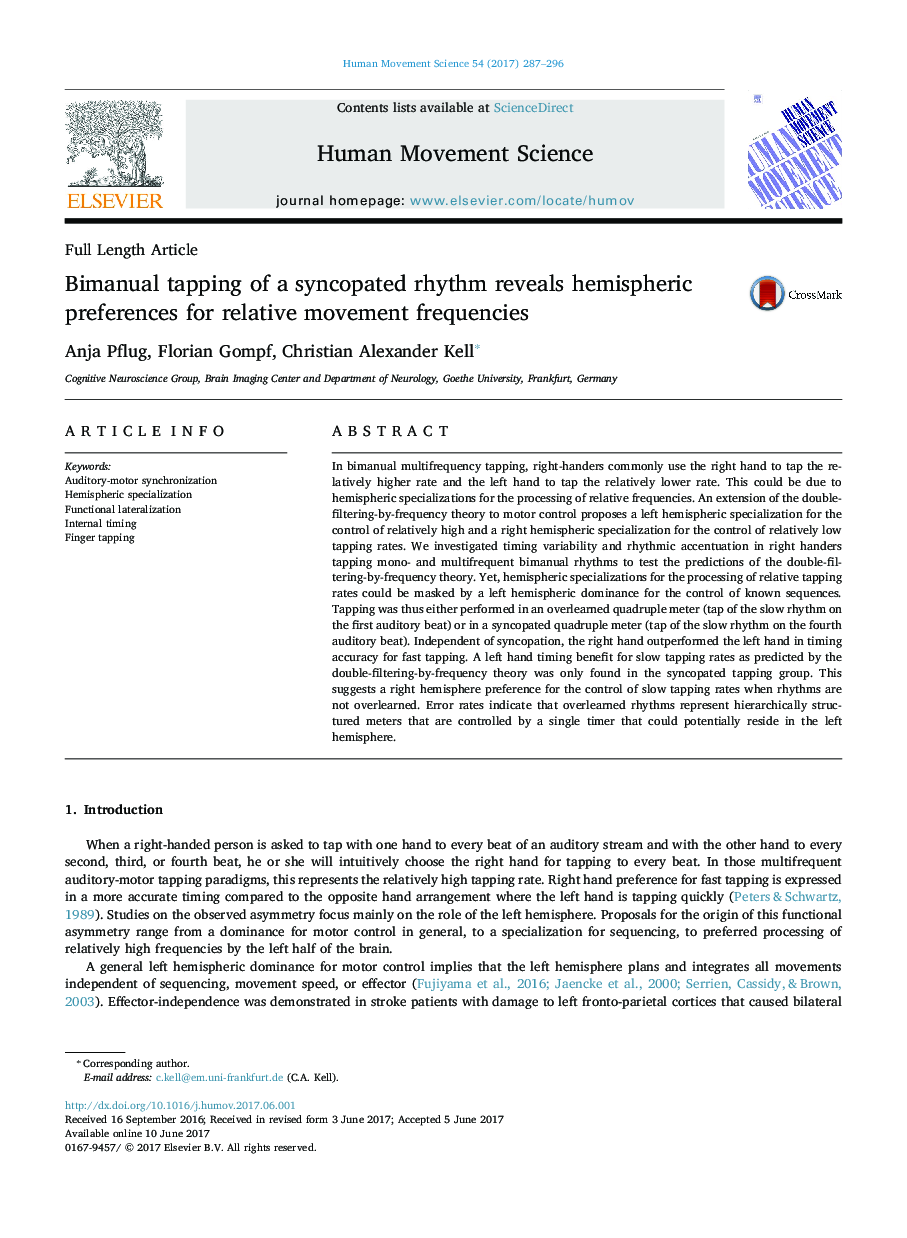| Article ID | Journal | Published Year | Pages | File Type |
|---|---|---|---|---|
| 5041988 | Human Movement Science | 2017 | 10 Pages |
â¢The right hand taps relatively high rates more precisely than the left hand.â¢Syncopation unmasks a left hand benefit for slow tapping rates.â¢Frequency-dependent lateralization of relatively slow and fast timers occurs only when tapping unknown meters.â¢Tapping a standard meter may rely on integrated timing by a single timer in the left hemisphere.
In bimanual multifrequency tapping, right-handers commonly use the right hand to tap the relatively higher rate and the left hand to tap the relatively lower rate. This could be due to hemispheric specializations for the processing of relative frequencies. An extension of the double-filtering-by-frequency theory to motor control proposes a left hemispheric specialization for the control of relatively high and a right hemispheric specialization for the control of relatively low tapping rates. We investigated timing variability and rhythmic accentuation in right handers tapping mono- and multifrequent bimanual rhythms to test the predictions of the double-filtering-by-frequency theory. Yet, hemispheric specializations for the processing of relative tapping rates could be masked by a left hemispheric dominance for the control of known sequences. Tapping was thus either performed in an overlearned quadruple meter (tap of the slow rhythm on the first auditory beat) or in a syncopated quadruple meter (tap of the slow rhythm on the fourth auditory beat). Independent of syncopation, the right hand outperformed the left hand in timing accuracy for fast tapping. A left hand timing benefit for slow tapping rates as predicted by the double-filtering-by-frequency theory was only found in the syncopated tapping group. This suggests a right hemisphere preference for the control of slow tapping rates when rhythms are not overlearned. Error rates indicate that overlearned rhythms represent hierarchically structured meters that are controlled by a single timer that could potentially reside in the left hemisphere.
